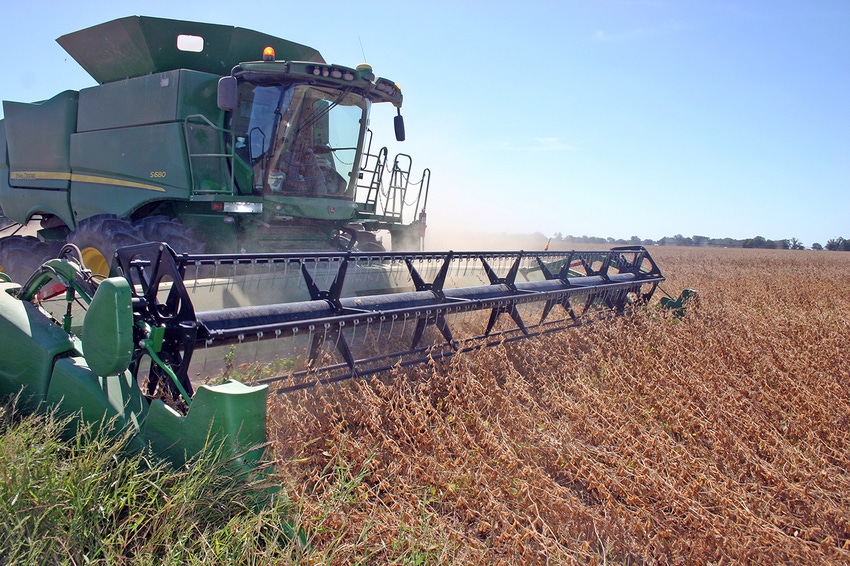
U.S. agriculture’s strength may also be its weakness. The diversity, integration of enterprises, and independence of farm operations allow producers a great deal of freedom in crop selection, marketing, and production practices. Those advantages might also make the nation’s agriculture vulnerable to both natural and intentional biological agents.
“Perhaps now, more than any time in our history, agricultural industries are at risk from a variety of threats that have the potential to severely disrupt our economy and food supply, and cause great harm to our public health sector,” said Tammy Beckham, Dean of the College of Veterinary Medicine at Kansas State University, in testimony at a House Agriculture Committee hearing.
Beckham, along with Ambassador John Negroponte, a former U.S. Deputy Secretary of State, testified on the importance of agriculture to national security.
“One specific kind of threat focuses on the risks of biological attack on U.S. agriculture,” said Negroponte. “The consequences of a successful attack range from economic damage to threats to food safety and public health. Although there have been no large-scale attacks, it is important to strengthen surveillance, monitoring, and tracking, and to enhance nationwide laboratory networks to insure food, veterinary, plant health, and clean water. As federal retirements continue apace, we need to build up talent in these areas for the future.”
House Agriculture Committee Chairman K. Michael Conaway, R-Texas, explained the reasoning behind a hearing on agriculture and national security. “Many may wonder why the Committee on Agriculture would hold a hearing on national security. A former chairman of this committee, Kika de la Garza of Texas, would often ask, ‘How long can a nuclear submarine stay under water?’ The simple answer: Until it runs out of food.”
Agriculture/security link
With the declining number of Americans involved in production agriculture, Conaway said, many members of Congress are not aware of the link between agriculture and national security. His position on the Armed Services Committee and as chairman of the Agriculture Committee gives him a unique perspective on the important relationship, he said.
“Agriculture and national security are intertwined in many different ways — whether it is insuring that food is available to meet nutritional needs for both those within our own borders and those around the world, or insuring that food coming into our borders is disease- and pest-free, or guaranteeing that farmers and ranchers have the needed policy tools in place to continue producing food and fiber.”
Ranking Committee Member Collin Peterson, D-Minn., echoed Conaway’s sentiments. “A strong agriculture sector and stable food supply are critical to national security. And agriculture has an important role to play when it comes to our country’s national security interests — something I don’t think a lot of people really understand.”
Conaway noted that the ongoing transitions in the way American farmers produce food, in addition to the growing volume of food imported from countries with less regulation and oversight, emphasizes the importance of vigilance for both home-grown food and imported products.
Six important segments
Negroponte cited six important segments necessary for food security — infrastructure, biodefense, resource strategy, agricultural research, trade policy, and support for international agricultural development.
“Agriculture is extremely dependent on roads, rail, electricity, water, and other physical infrastructure,” he said. “It is important for federal departments and agencies to further advance efforts to protect critical infrastructure and key resources by preventing, deterring, and mitigating deliberate efforts to destroy, incapacitate, or exploit them, by working across agencies and with state and local governments and the private sector.”
The risks of biological attack on U.S. agriculture are significant, he said. “The consequences of a successful attack range from economic damage to threats to food safety and public health. Resource strategy is crucial, “since agriculture is so tied to energy, water, and other resources. We may consider these items themselves to be of strategic importance. In decades to come, water could become to global strategy what petroleum is today, since declining food security could contribute to large-scale political instability and conflict. These problems could be aggravated by climate change — which may disrupt resource availability.”
Agricultural research, he said, will be crucial to increasing food production to feed a world population of 9 billion by 2050. Also, a growing middle class will demand more and different kinds of food.
“Given the constraints on land, water and other resources, the only way to do this is to boost productivity. Unfortunately, funding for vital research at the U.S. Department of Agriculture and the Consultative Group on International Agricultural Research (CGIAR) has stagnated, while the need to produce food becomes more pressing. This needs to change.”
Market access critical
Trade policy will need tweaking, Negraponte said. “One vital consideration is market access — both for U.S. exporters and those in other countries. Exports boost U.S. farm income and create jobs, and trade can fill in gaps in local food supplies and allow access to lower cost products. Beyond this, exports from poor countries also can support their farm incomes and boost regional and global food availability. Stronger trade agreements could also work against a repeat of 2008, when more than 30 major food exporters restricted trade in order to stem rising domestic food inflation — at the cost of their trading partners.”
There is “a pressing need to support farming systems in the developing world,” he said. “Boosting agricultural production not only increases world food supplies, but it can reduce the vulnerability of political systems to weather, conflict, and other shocks. Boosting rural incomes can reduce hunger, prevent the emergence of disease, and reduce migration to the cities or as refugees overseas.”
Threats to U.S. food security could come from several sources, said Tammy Beckham. “Threats include a natural introduction of a foreign (trans-boundary) animal, emerging and/or zoonotic disease, or an intentional introduction of a biological agent (agroterrorism) into our agricultural systems,” she said.
“These threats would result in significant morbidity and/or mortality, cause great economic harm, adversely impact and/or disrupt our food supply, and/or contribute to an adverse public health event. Many of these agents do not require weaponization, can be easily obtained, and exist naturally in areas where terrorist groups such as the Islamic State (ISIS), al-Qa’ida, al-Shabaab, Boko Haram, and others who intend to harm the U.S. operate. In addition, the risk from emerging infectious and/or zoonotic diseases continues to threaten our animal, plant, and public health sectors.
Immediate action needed
“We must act immediately to address critical needs,” Beckham said. “There is a critical need for development and licensure of additional vaccines for the remaining serotypes of foot and mouth disease virus and other high-consequence animal and zoonotic disease agents — classical swine fever, African swine fever virus, Hendra virus, Rift Valley fever virus, Ebola, etc. Along with the vaccines, we must develop and validate new diagnostic technologies to help us detect and identify both known and emerging pathogens.”
Stakeholders should be prepared, she says, “for an appropriate response to emerging disease affecting our industries. In addition, we must work closely with our end-users, stakeholders, and first responders to develop a robust, integrated biosurveillance system capable of capturing and analyzing data on animal, human, and wildlife health.
“The ability to protect our agricultural industries, food supply, and public health sectors from natural introductions of biological agents, agro-terror threats, and emerging and re-emerging diseases is heavily dependent on an organized, strategic, and well-funded approach. This approach should institutionalize the ‘One Health’ concept, be highly collaborative in nature, leverage all available resources, and encompass an international, global health component.”
Sound agricultural policy has been “an integral piece of our ability to feed and clothe not only our nation, but the world,” Conaway said. “Agriculture is the backbone of the economy, and throughout history America has been able to not only survive, but thrive, because our agricultural safety net helps farmers weather the bad times. We must never forget that there is no food without the farmer.”
About the Author(s)
You May Also Like






